Paradigm CS-60SQ Handleiding
Bekijk gratis de handleiding van Paradigm CS-60SQ (20 pagina’s), behorend tot de categorie Speaker. Deze gids werd als nuttig beoordeeld door 117 mensen en kreeg gemiddeld 4.0 sterren uit 59 reviews. Heb je een vraag over Paradigm CS-60SQ of wil je andere gebruikers van dit product iets vragen? Stel een vraag
Pagina 1/20

Paradigm Electronics Inc. 205 Annagem Blvd., Mississauga, ON L5T 2V1. MPO Box 2410, Niagara Falls, NY 14302
In Canada:
In Canada:
In Canada:
In Canada: In Canada: In U.S.:
In U.S.:
In U.S.:
In U.S.: In U.S.:
O W N E R S M A N U A L O M- 1 1 0
Thank you for choosing award-winning Paradigm®speakers and congratulations!
You are about to hear the difference our sonically accurate in-wall/in-ceiling speakers
make in your audio/home theater system. These speakers are the product of countless
hours of comprehensive research and development and will reward you with exceptional
sound for many years.
To ensure proper installation, please read this manual and follow all instructions.
If you have further questions, contact your dealer or visit the Q&A page on our
website at www.paradigm.com.
In-Wall /In-Ceiling

YOUR NEW SPEAKERS
Although Paradigm
®
in-wall/in-ceiling speakers sound great out of the carton, they will sound even
better once they are broken in. Operate them for several hours before you listen critically.
High-frequency drivers use ferro-fluid that can thicken at temperatures below 10° C (50° F). If your
speakers have been transported or stored in the cold, let them warm to room temperature before use.
Clean speaker housing with a soft, damp cloth. Do not use a strong or abrasive cleaner or get any
part of the speaker wet.
HOW TO AVOID SPEAKER DAMAGE
Use an appropriate amplifier. At high volumes, a very powerful amplifier can overdrive your
speakers and damage them. On the other hand, if your amplifier isn’t powerful enough, it can
produce clipping distortion that can easily damage high-frequency drivers.
(See your dealer.)
Don’t be fooled by your amplifier’s volume control. It adjusts listening level—it does not indicate
power output. If your speakers begin to sound harsh or grating, or if you hear the bass breaking up,
turn the volume down immediately or you will damage your speakers! This type of damage
constitutes abuse and is not covered by warranty!
Tone controls and equalizers can demand even more power from an amplifier, lowering the point
at which it produces clipping distortion. Use them sparingly, if at all, and do not use them when
listening at loud levels.
YOUR LISTENING ROOM
Paradigm
®
in-wall/in-ceiling speakers are suitable for use in a wide variety of listening environments.
Note however, that room construction, dimensions and furnishings all play a part in the quality of
sound you ultimately achieve. The extra care taken in installation will result in greater listening
enjoyment. Try to follow these guidelines:
a) Strong, rigid walls and ceilings are preferred for best bass balance. For even better results add
cross-braces at about 12˝ (30 cm) above and below (either side) the speaker to further
increase rigidity.
b) Midrange and high frequencies are affected by room furnishings. For best sound, your
listening room should contain an average amount of curtains, carpets, sofas, etc.
SPEAKER ASSEMBLY PARTS LIST
(one speaker)
•
1 in-wall/in-ceiling speaker complete with attached mounting bracket, hardware, and wire tie
•
1 mounting template
•
1 paint mask
1
TABLE OF CONTENTS
Your New Speakers . . . . . . . . . . . . . . . . . . . . . . . 1
How To Avoid Speaker Damage . . . . . . . . . . 1
Your Listening Room . . . . . . . . . . . . . . . . . . . . . . 1
Speaker Assembly Parts List . . . . . . . . . . . . . . 1
Speaker Placement Guidelines . . . . . . . . . . . . 2
Color-Match Painting . . . . . . . . . . . . . . . . . . . . . . 4
Installation into Existing Walls or Ceilings
. . . 4
Speaker Placement (pictorial) . . . . . . . . . . . . . . 6
Speaker Installation and
Connection (pictorial)
. . . . . . . . . . . . . . . . . . . . . .
8
Troubleshooting Guide . . . . . . . . . . . . . . . . . . . . . 9
Limited Warranty . . . . . . . . . . . . . . . . . . . . . . . . . . 10

2
SPEAKER PLACEMENT GUIDELINES
(all models)
Location
When installing your speaker pick a location between studs or ceiling joists. Be careful not to
damage any wires when you cut the installation hole.
Accurate Timbre and Imaging
Our in-wall/in-ceiling speakers feature wide, uniform dispersion and can be installed almost
anywhere. For the most accurate timbre and imaging however, place speakers approximately equal
distance apart and select locations that allow sound to reach the listening area unobstructed.
Bass Performance
Placing speakers near corners will emphasize bass. For more balanced sound we recommend that
you avoid corners when considering speaker placement.
If your speakers have ‘SM’ in their name, or feature a Guided Soundfield™, see placement options
and additional recommendations following:
Placement Options for ‘SM’ Models
Your ‘SM’ speaker offers two options for connection:
•Stereo Input: Wide dispersion “Left plus Right” channel sound from a single ‘SM’ speaker.
•Mono Input: Very wide dispersion stereo sound from two ‘SM’ speakers, one for the left,
one for the right.
With their Dual-Directional Soundfield™, ‘SM’ speakers provide wider than normal dispersion,
allowing them to be used in a variety of applications:
Single Speaker, Wide Dispersion “Left plus Right” Channel Sound (Fig. 1a)
Ideal in smaller areas less suited to a stereo pair of speakers or where a single speaker is the preferred
choice. The speaker is connected to both left and right amplifier channels. Position speakers to achieve
the broadest sound coverage in the main listening area.
Multiple Speakers, Distributed “Left plus Right” Channel Sound (Fig. 1b)
In larger areas (offices, etc.) multiple speakers (each wired for “Left plus Right” channel sound) may
be used to eliminate the sound imbalances that occur with separate stereo speakers as people move
around the room, or are seated closer to one speaker than the other. Position speakers to achieve
the broadest sound coverage in the main listening area.
5.1 Surround Placement Using Two Speakers (Fig. 1c)
Place one speaker on either side of the listening area. Position so that one dome of each speaker
points toward the front of the room and the other points toward the back. Connect each speaker for
Mono sound, then use for L/R Surrounds to produce spacious 5.1 surround sound.
6.1 Rear Placement Using One Speaker (Fig. 1d)
Center one speaker behind the listening area, domes positioned toward the left and right sides of the
room. Connect speaker for Mono sound, then use as 6.1 Rear for wide-dispersion rear-channel sound.
7.1 Surround + Rear Placement Using Two Speakers (Fig. 1e)
Place one speaker on either side of the listening area. Position so that one dome of each speaker
points toward the front of the room and use those channels for L/R sound. The other domes will be
pointed toward the back of the room which can then be used for L/R rear.
7.1 Rear Placement Using One Speaker (Fig. 1f)
Center one speaker behind the listening area with domes positioned toward the left and right sides
of the room. Connect to L/R Rears for spacious 7.1 rear-channel sound.
For Connection instructions for ‘SM’ models turn to page 5.
Product specificaties
| Merk: | Paradigm |
| Categorie: | Speaker |
| Model: | CS-60SQ |
Heb je hulp nodig?
Als je hulp nodig hebt met Paradigm CS-60SQ stel dan hieronder een vraag en andere gebruikers zullen je antwoorden
Handleiding Speaker Paradigm
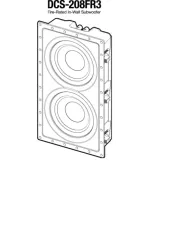
10 Maart 2025

21 Februari 2025

21 Februari 2025
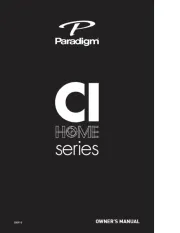
21 Februari 2025
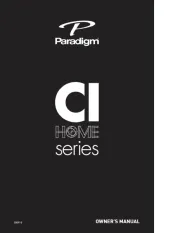
21 Februari 2025

21 Februari 2025

21 Februari 2025

21 Februari 2025

21 Februari 2025

7 December 2023
Handleiding Speaker
- Gira
- Thomann
- Logik
- Rockville
- Rockford Fosgate
- Overmax
- Airpulse
- Taga Harmony
- Crunch
- MB Quart
- Audiovox
- American Audio
- Adj
- Edenwood
- Auratone
Nieuwste handleidingen voor Speaker
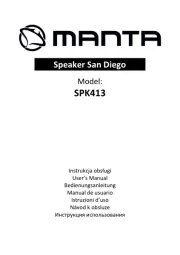
14 September 2025
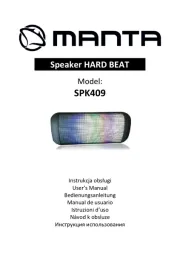
14 September 2025

13 September 2025
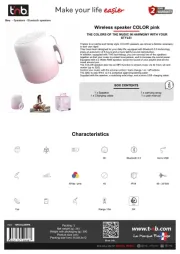
13 September 2025
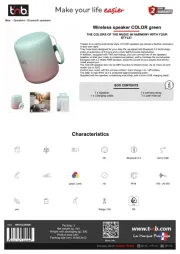
12 September 2025
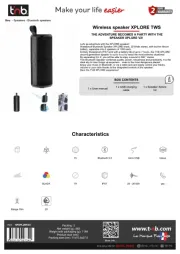
12 September 2025
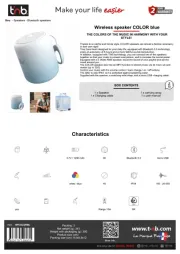
12 September 2025
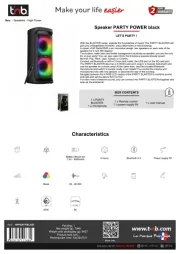
12 September 2025
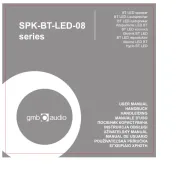
12 September 2025
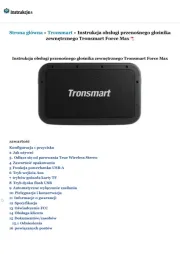
12 September 2025